Lao PDR Project
Timeframe
June 2020 to June 2025
Context
Agriculture is the main livelihood in rural Laos, responsible for about 72% of the workforce.
Land use change and agriculture account for over 95% of the total GHG emissions, of which 20% comes from livestock. Lao PDR’s enhanced Nationally Determined Contribution makes an unconditional commitment to 60% reduction in emissions by 2030 compared to 2020.
The NZCSA initiative is supporting Lao PDR to develop Tier 2 emissions factors for livestock, particularly cattle and pigs. It is also building capacity to report livestock emissions and promoting long-term integration of livestock development and GHG mitigation in national strategies and plans.
-
Policies and programmes: Prior to this project, although there were passing mentions of livestock in some national strategies on climate change, the sector was not included in Lao PDR’s NDC and GHG management was not included in any sector development strategies. National livestock development plans targeted increasing livestock populations, product output, exports, and the proportion of production in commercial farms.
Capacities: Staff at the Department for Livestock and Fisheries (DLF), which is responsible for livestock sub-sector management in Lao PDR, had very limited understanding of how livestock production affects GHG emissions and had not been involved in either GHG inventory compilation or NDC-related policy processes, which are led by the Ministry of Natural Resources and Environment (MONRE). However, parallel to design of the CSA Initiative’s project, a large ADB investment was under design, including funding from the ADB Climate Change Fund, although the measures to be supported were not yet identified. Moreover, the recently completed MFAT-funded Lao Quality Beef Initiative (LQBI) had successfully demonstrated practical ways to improve the productivity of smallholder cattle farming. There was no livestock GHG expertise or measurement capability at the National University (NUoL).
-
The longer-term objective in Lao PDR was to enable government livestock agencies and other sector stakeholders to identify, plan and implement measures that meet national objectives for livestock development and GHG mitigation in line with Lao PDR’s NDC. Specific targeted outcomes were:
DLF has the capacities to compile, manage and report a livestock GHG inventory on a sustainable basis, including Tier 2 inventories for cattle and pigs.
Priority data gaps to improve GHG inventory quality have been addressed.
In-country assessment of composition and methane yield from regionally important livestock diets and assessment of pig gross energy intake.
GHG mitigation options with high potential for adoption by farmers have been identified.
Policy makers in livestock and related sectors are informed of the potential for GHG mitigation for livestock and options for MRV of livestock sector emission reductions
-
GHG inventory improvement: The Tier 1 livestock GHG inventory for all species has been improved, and Tier 2 inventories for cattle and pigs have been compiled. An inventory core team, comprised of technical staff from the DLF Department of Livestock Production, the Climate Change Department (CCD) of the Ministry of Natural Resources and Environment, and the Centre for Agriculture Statistics were trained in how to update the inventory annually, and developed an Excel-based GHG calculator and SOPs to support them in this. Some follow-up support may be needed, as discussions with CCD leadership indicated that an online inventory database developed for them by GGGI was not designed to incorporate Tier 2 data needs. The Tier 2 inventory was compiled using detailed household survey data collected by DLF in Central Laos, and literature values for the other two regions. UN FAO has already committed $21,000 to support replication of the survey in Southern Laos and ADB has indicated interest to support a survey in Northern Laos. Other improvements to national data systems were discussed with the Centre for Agriculture Statistics, and the idea of a livestock statistics improvement plan has been raised in national policy meetings by the DDG of DLF but would require donor support to implement.
Contributions to national climate and livestock development strategies: The NZCSA supported assessment of the GHG impacts of two previous projects that promoted good cattle husbandry practices in Lao PDR. One was the MFAT-funded LQBI. Another was based on documentation of an ACIAR project. Both cases showed that improved practices would reduce GHG emission intensity. Scenarios for upscaled adoption of these practices were discussed with DLF and used to estimate national mitigation potential. The results were provided to an FAO project supporting Lao PDR to update its agriculture NDC.
Livestock sector capacities to engage in GHG issues: Through their participation in multiple training and meeting events, DLF leadership and their senior technical staff have a clear understanding of the links between national efforts to increase cattle sector productivity and GHG emissions and its importance. As an indication of this, a project concept note for a beef sector development strategy under discussion between DLF and KOICA was revised to include GHG mitigation at the request of DLF. Due to the capacities built, DLF staff were for the first time able to take part pro-actively in discussions on NDC updating. By the end of the program, DLF had just begun implementing a large ADB loan project. Several discussions were held with DLF and ADB staff on how to incorporate lessons from the NZCSA in ADB project activities, including MRV of GHG emission reductions from project investments in smallholder systems, and possible funding of continued methane measurements targeting the promoted smallholder practices. DLF will require continued support on mainstreaming GHG mitigation in sector activities. But DLF leadership now understand enough to know what support they need to request.
Research capacities: The project supported the first measurements of methane emissions from cattle in Lao PDR and supported experiments on pigs to determine gross energy intake and feed digestibility. These experiments have laid an initial basis for continued research on the topic in Lao PDR. DLF strongly sees the value of research and is keen to support research institutions to attract funding for continued in-country research.
-
The project has contributed to strengthening the policy framework for addressing climate change in the context of agricultural growth: The NZCSA’s assessments were key inputs into updating Lao PDR’s NDC. The updated NDC will be the first time that Lao PDR includes livestock activities in its climate policy. DLF leadership have a clear understanding of the links between productivity, GHG emissions and GHG emission intensity. The basis has been laid for incorporating these considerations in future revisions of livestock development policies.
The project has strengthened capacities and institutional cooperation: In addition to DLF, staff of the CCD and Centre for Agriculture Statistics, and researchers from NUoL and NAFRI were involved in the inventory training throughout. This has not only produced a group of more than 10 individuals with good understanding on this topic. It has also strengthened collaborations between these agencies. This bodes well not only for continued inventory compilation, but also for inter-agency cooperation in other related activities, including further resource mobilisation in this donor-dependent country.
Strengthening regional collaboration: The principal project scientist from NUoL (Dr Viengsakoun Napasirth) participated in a range of NZCSA policy and scientific workshops and this has led to engagement in the new Lankan-Mekong Dairy project led by KKU in Thailand and regular communication with other Headbox users in the NZCSA.
Leveraging investment and strengthening donor relationships: Livestock climate action in Lao PDR is highly dependent on donor finance. By demonstrating progress on addressing livestock GHG emissions, at least two donors (i.e., UN FAO and ADB) have been engaged in discussions on how to support DLF to make further progress and achievements in this area.
Reports
Inventory Improvement
Mitigation Options
Project Information
Impact
Improvements to the inventory are supporting the development of domestic agricultural policies by establishing robust production data, identifying mitigation opportunities for livestock and tracking reductions.
Implementation Partners
AgriServ’s Laos Team is running day to day implementation
In-country partners
Department of Livestock and Fisheries (DLF)
The Environment Department of the Ministry of Natural Resources and Environment (MoNRE)
Livestock Research Centre (LRC) of the National Agriculture and Forestry Research Institute (NAFRI)
Faculty of Agriculture (FAG) of National University of Laos (NUoL)
The closing workshop group photo with all key counterparts and the GHG international team (May 2025)
Regional Programme lead Andreas Wilkes visiting 6 Laotian farmers to discuss farming systems, challenges and GHG mitigation. Part of the work to assess the GHG mitigation effects of adopting good cattle husbandry practices (Jan 2025)

Household surveys were required to fill data gaps and support the Tier 2 Inventory. Interviews were often with women who play a significant role in Lao livestock farming (Xiang Khouang Province, Nov 2024)
Project close out meeting May 2025). (Andreas Wilkes (Inventory), Prof Roger Hegarty (Research) and Prof Steve Morris (Farm Solutions) gave presentations and held discussions on the future for GHG emissions in the Laos livestock sector. Also discussions with Asian Development Bank representative to integrate the NZCSA achievements into the new ADB-funded Laos Cross Border Livestock Project (USD 30 million), which is set to commence later in 2025.


Laos GHG Livestock Tier 2 Inventory Training with Andreas Wilkes NZAGRC and DLF DDG Dr Kaviphone Phoutthavong, Chair of Technical Working Group (TWG) (19-20 Mar 2024)

Laos GHG Livestock Tier 2 Inventory Training (19-20 Mar 2024)

The Core Inventory Team members meeting with the Department of livestock farming (Oct 2024)
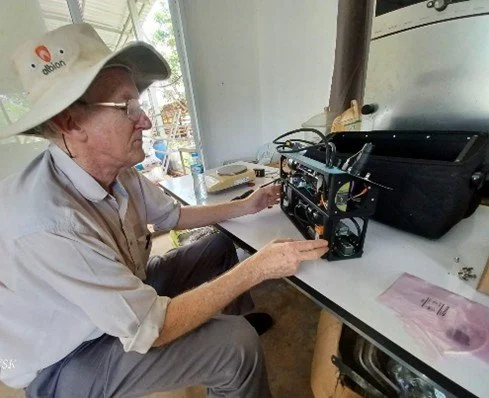
Final adjustments to the new NUoL Faculty of Agriculture cattle facility (May 2025)
Project office handover documents being signed and GHG team along with DLF auditors (May 2025)
Project office handover documents being signed and GHG team along with DLF auditors (May 2025)

First experiments with the NZ funded livestock measurement equipment (headboxes) (Jan2024).

Typical household livestock farms in Vientiane district visited during surveys (Oct 2024)

Household surveys were required to fill data gaps and support the Tier 2 Inventory. Often a briefing was organized by local DAFO staff to explain the survey purpose to participating farmers (Xiang Khouang Province, Nov 2024)

Laos Livestock GHG Technical Working Group – TWG during their inaugural meeting – Chaired by DLF DDG Dr Kaviphone Phoutthavong (Mar 2024)

Training of staff at the brand new measurement facility (Mar 2024).

Completion and validation of the measurement facility (Mar 2024).

Construction of the GHG measurement facility (Oct 2023)

Working lunch (Sep 2023)

MSc students supporting the experiments and caring for the animals (Aug 2023).

Meetings to progress inventory improvement.

Chopping Rice straw for feed experiments (Jan 2024)

Survey interviews required close collaboration with the DLF Inventory team, Provincial officials (PAFO) and District level Govt staff (DAFO). Here are project and government staff for 3 districts in Vientiane Province (6-12 Oct 2024)

Hand mixing of TMR ingredients before new feed mixer arrived. TMR, or Total Mixed Ration, is a precise mixture of all ingredients for cattle, including forages, concentrates, and supplements, combined into a single, uniform diet (Jan 2024)

A typical livestock farm visited during the surveys (Nov 2024)

The NZCSA measurement facility is used to train a lot of university students. Here are 4th year Animal Science students during a study / field visit to learn about the headbox system and methane gas analysis (Aug 2024)

Valuable forage collected and used in feed experiments.
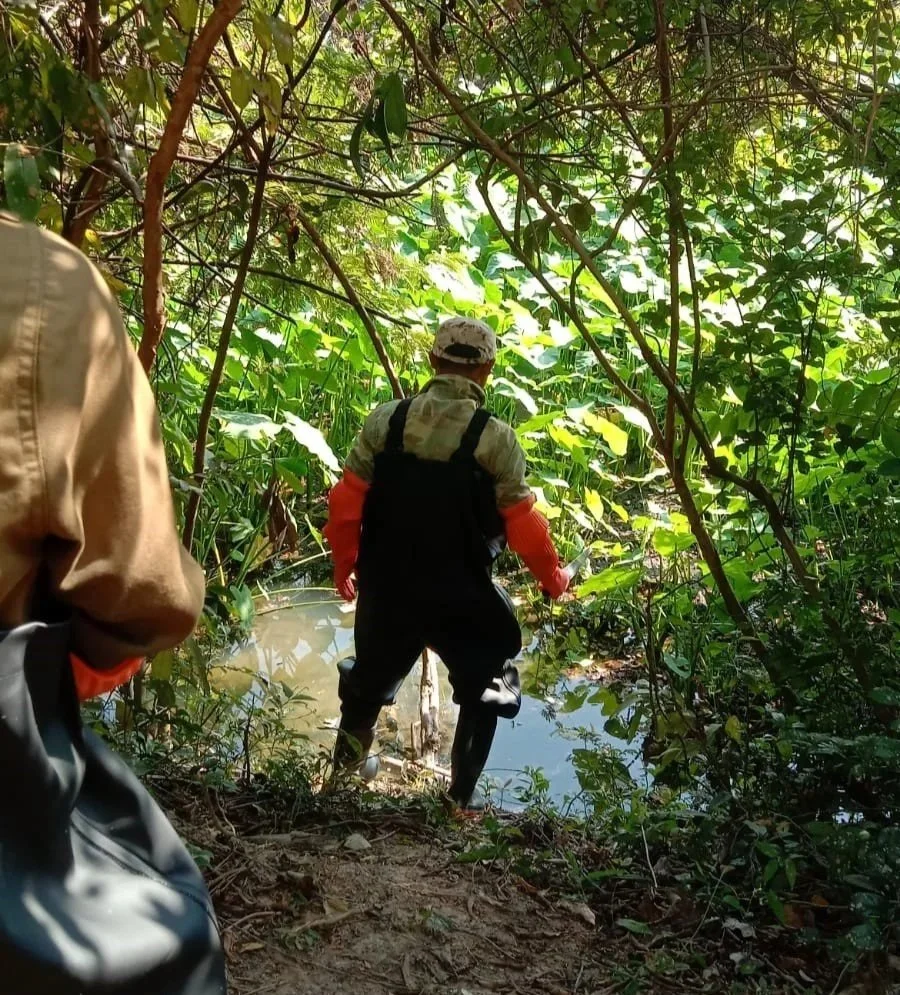
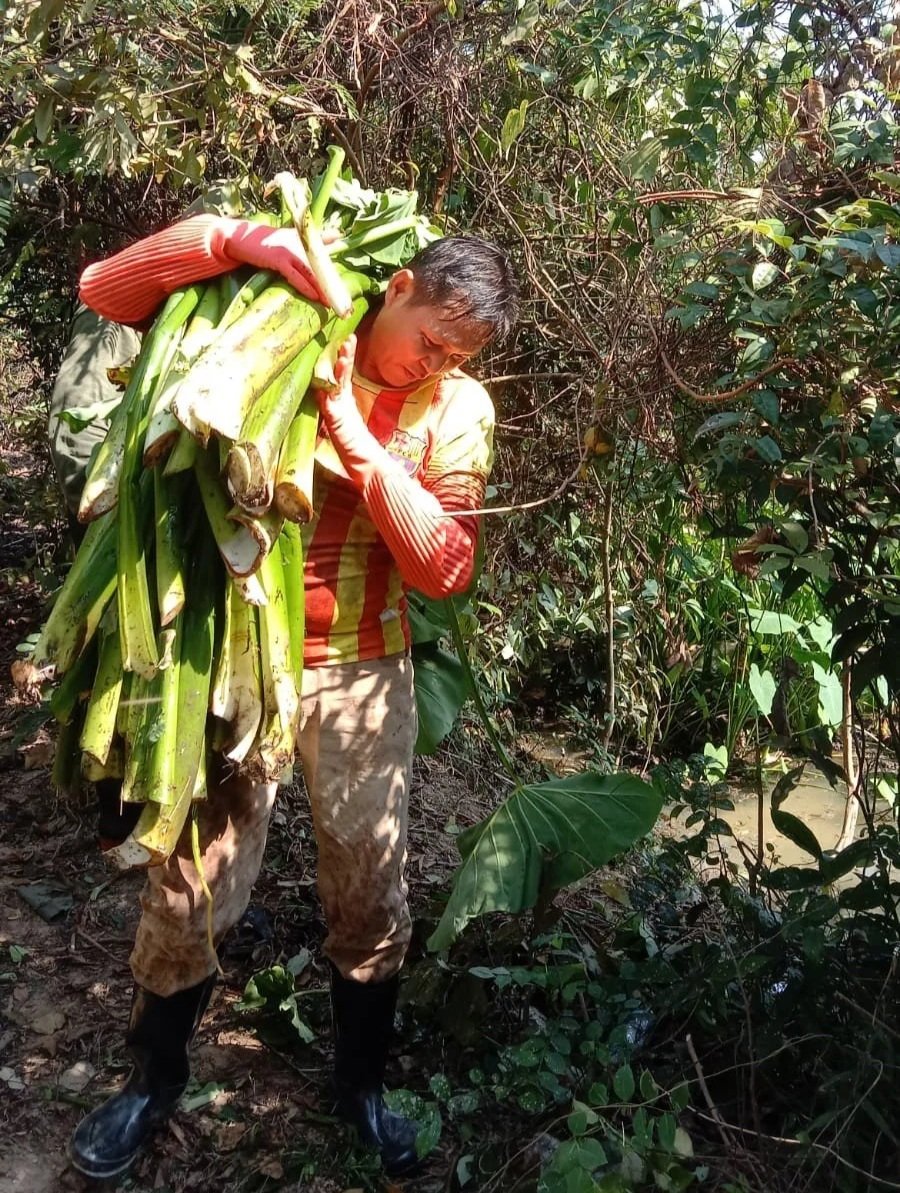


Discussion about way forward on inventory improvement with the DLF Core Inventory group at the GHG office (Mar 2024)
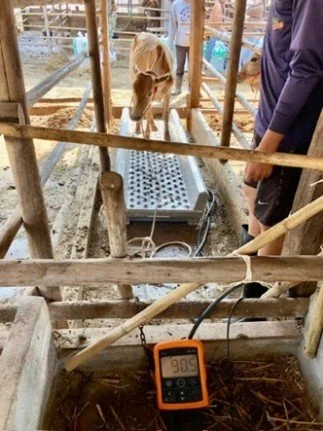
Weighing of livestock during feed experiments.
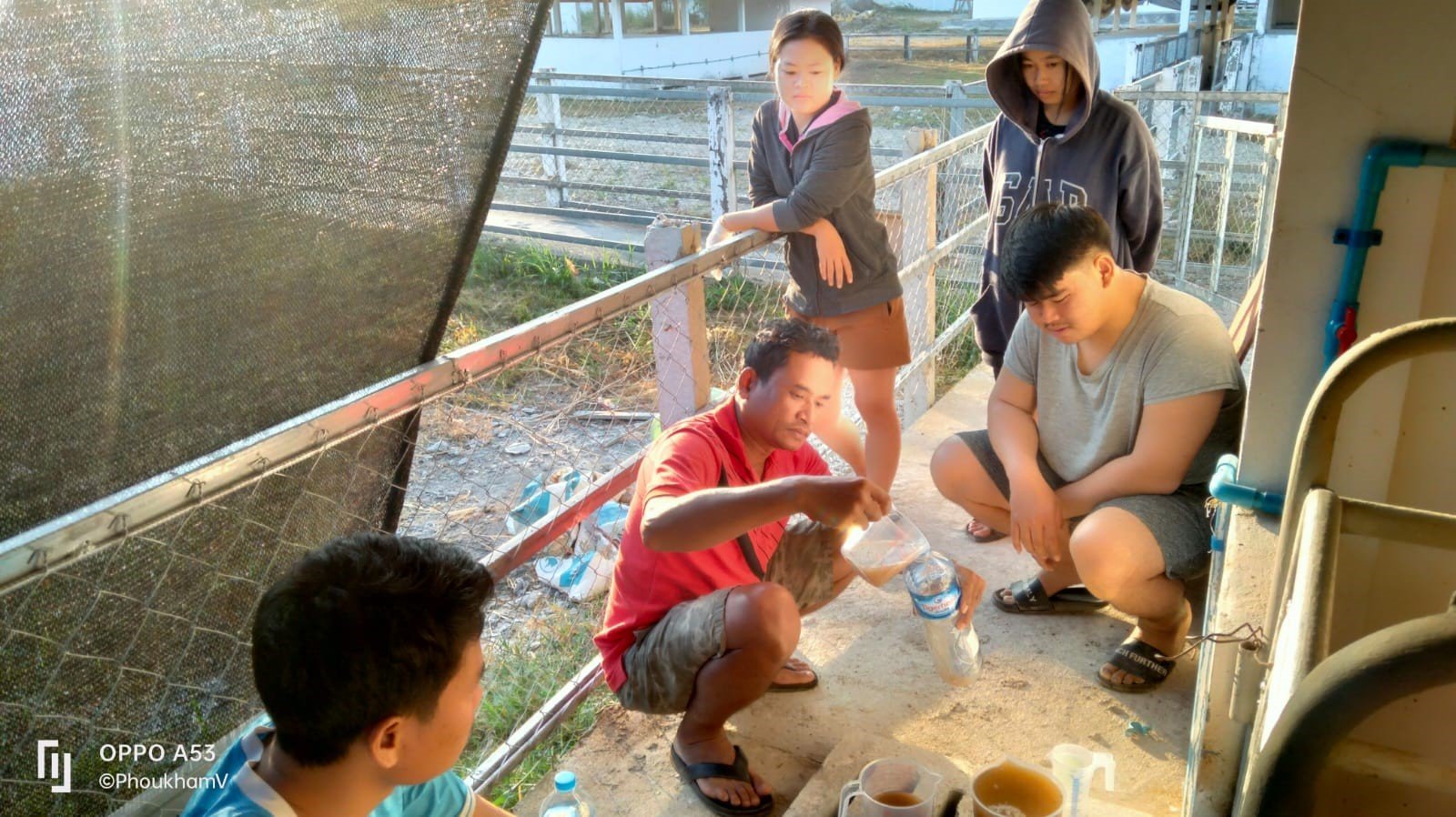
Initial sampling done with the help of MSc students.







